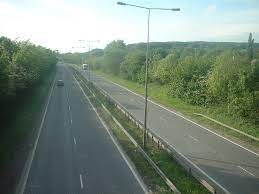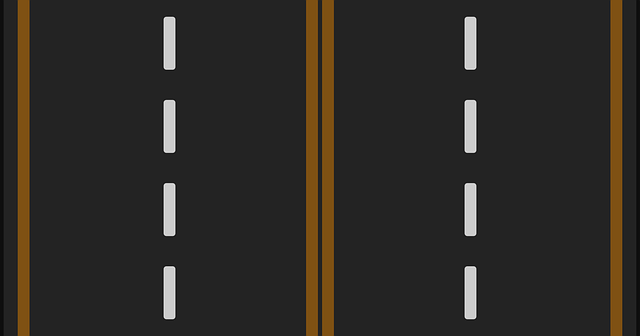
1. How can you prepare yourself for driving on dual carriageways?
To drive safely on dual carriageways, preparation is key. Start by planning your route in advance and familiarising yourself with the road’s layout. Ensure your vehicle is well-maintained, and all passengers wear seat belts. Avoid using mobile phones or driving under the influence of drugs or alcohol. Pay attention to posted speed limits and adjust your speed according to weather conditions. Keep a safe following distance from other vehicles and avoid tailgating. Always check your mirrors frequently and signal early when changing lanes or turning. Stay alert at all times, especially when entering or exiting slip roads, and be prepared for sudden stops. Remember to take regular breaks if feeling drowsy and avoid distractions such as eating or drinking while driving. By following these simple steps, you can prepare yourself for a safe and enjoyable journey on dual carriageways.
2. What are the general rules and techniques to follow while driving on dual carriageways?
When driving on dual carriageways, it’s crucial to follow some general rules and techniques to stay safe and confident. Always plan your route ahead of time and use the correct lane for your speed and destination. Keep a safe distance from other vehicles, check your mirrors frequently, and signal early and clearly. When overtaking, ensure there is enough space before moving back into the original lane. Stay alert at all times, be aware of slip roads, and adjust your speed according to weather conditions. Avoid distractions such as eating/drinking while driving and never drive under the influence. Follow posted speed limits, do not tailgate other drivers, and always check blind spots before merging/changing lanes. By following these guidelines, you can have a smooth and safe journey on dual carriageways.
3. How should you overtake safely on a dual carriageway?
When overtaking on a dual carriageway, safety is paramount. Before making your move ask yourself the following questions, is it safe, is it legal and is it necessary ? If the answer is yes to these questions then ensure that there is sufficient space between your vehicle and the one in front of you. Check your mirrors and signal clearly to let other drivers know your intentions. Move into the overtaking lane, accelerate to a safe speed, and overtake the other vehicle. Once you have passed, check your mirrors again and move back into the original lane with plenty of space between both cars. Remember to never cut in too close or too quickly, as this can be dangerous for both vehicles involved. By following these guidelines and being aware of your surroundings, you can overtake safely on dual carriageways.
4. What is the appropriate speed limit when driving on a dual carriageway, and how do you maintain it?
Maintaining the appropriate speed limit is crucial when driving on dual carriageways. The maximum speed will not exceed 70 mph, but depending on the vehicle type, location and road conditions this may vary. So make sure you are aware of the speed limits signs. Always keep an eye out for posted speed limits and adjust your speed accordingly. To maintain a safe and steady speed, use cruise control if your vehicle has it, and avoid sudden acceleration or braking. Remember to keep a safe distance from other vehicles to allow for sudden stops or changes in traffic flow. By following these simple guidelines, you can ensure a smooth and safe journey on dual carriageways.
5. What precautions should be taken while entering or exiting a dual carriageway?
When entering or exiting a dual carriageway, it’s essential to be mindful of your surroundings. Always check your mirrors and signal early to let other drivers know your intentions. When joining the dual carriageway, match your speed with the traffic flow when using the slip road to build up speed gradually. Keep a safe following distance from the vehicle in front of you and be prepared for sudden stops or changes in traffic flow. When exiting the dual carriageway, use the left-hand lane and start signalling well in advance. Maintain a safe speed and avoid braking suddenly as this can cause accidents behind you. Remember, being cautious and alert is key to staying safe on multi-lane roads like dual carriageways.
6. How can you handle emergency situations like breakdowns or accidents on a dual carriageway?
In case of a breakdown or accident on a dual carriageway, the first priority is to ensure the safety of yourself and others. If possible, move your vehicle to a safe location off the road, designated parking area or the hard shoulder. Turn on your hazard lights and if necessary, call for emergency services. Stay inside your vehicle with seat belts fastened until it’s safe to exit. If you need to exit your vehicle, do so on the left-hand side and move away from the road as quickly as possible. Avoid standing behind or in front of your vehicle and never attempt to cross the carriageway. Remember to stay calm and composed during such situations, and follow any instructions given by emergency services.
7. Why is it essential to stay alert and focused while driving on multi-lane roads, especially during adverse weather conditions?
Staying alert and focused while driving on multi-lane roads is crucial, especially during adverse weather conditions. High speeds and heavy traffic can make it challenging to react quickly to unexpected changes, making the risk of accidents much higher. To avoid dangerous situations, drivers must stay focused, scan their surroundings frequently, and be prepared to make sudden stops or lane changes if necessary. Adverse weather conditions like rain, fog or snow can further increase the risk of accidents by reducing visibility and increasing stopping distances. Therefore, it is essential to adjust your speed accordingly and maintain a safe distance from other vehicles. By staying alert and focused on the road, you can ensure that you arrive at your destination safely and without incident.
8. Can taking Pass Plus courses help improve your confidence in handling different types of roads, including motorways and dual-carriage ways?
Pass Plus courses can be an excellent way to improve your confidence and skills when driving on dual carriageways and other types of roads. The course is designed to provide newly qualified drivers with additional training in various areas, including driving in different weather conditions, on rural roads, and on motorways. By taking a Pass Plus course, you’ll learn valuable techniques and strategies that will help you stay safe and confident while navigating these roads. Additionally, some insurance companies offer discounts to drivers who have completed the Pass Plus course, making it an even more attractive option for those looking to save money on their premiums. So if you’re looking to enhance your driving skills and boost your confidence on the road, consider enrolling in a Pass Plus course today.



